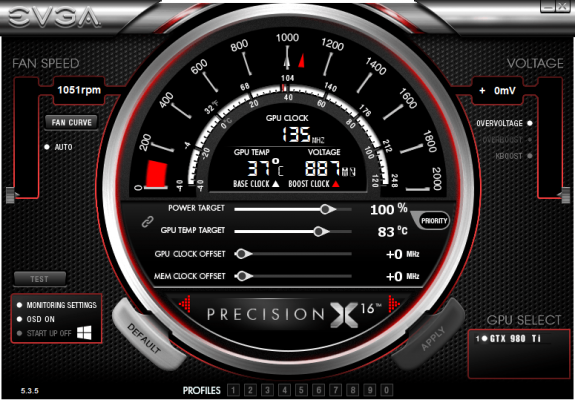

You can download the latest version of Precision X straight from EVGA’s website, or from Techspot here. For this instructional, we use EVGA’s Precision X software. Overclocking the pixel clock (and therefore running at a higher refresh rate) is surprisingly easy to accomplish. The higher the pixel clock, the higher your refresh rate can be. The relationship between your refresh rate and the pixel clock is fairly straightforward, as such. The pixel clock is the rate at which pixel data is being sent from a source (in this case, your GPU), to the monitor. This means whatever’s displayed onscreen gets refreshed 60 times a second. Scroll down towards the end of the article, where we talk about the AMD-specific method.Ī typical monitor has a refresh rate of 60 Hz. There is an alternative method for AMD users. Are we cool with that? Let’s get started.įurther Note: The method we’re describing here apparently only works on Nvidia cards, as this method of monitor overclocking was enabled in recent Nvidia drivers. Most likely, none of these things will happen. The author and IGNdia will not bear responsibility if your monitor artefacts/stops working/triggers a nuclear apocalypse. However, technically, monitor overclocking will have you operating your monitor outside its intended design specs.

We haven’t encountered any problems whatsoever on our safely overclocked monitors, and from extensive forum trawling, we’ve yet to discover a single user who’s had issues with overclocked monitors. Just a little disclaimer: Monitor overclocking is a lot safer than GPU/CPU overclocking. It’s down to a nifty trick called Monitor Overclocking. I’m telling you that you, me-anyone can run more or less any monitor at a refresh rate higher than 60 Hz. What if I told you that you can set up a 90-120 Hz monitor…for free? I’ll just have to settle for a locked 60, like everyone else.’ ‘There’s no way I’m going to get my hands on one of those. But they’re absurdly expensive, you might think. That’s where 120 Hz and 144 Hz monitors come into the picture-playing at twice the framerate is often enough to give you just that little edge to get to the top. A locked 60 is a wonderfully smooth experience, but when you’re getting torn up in the middle of that gunfight, any potential advantage you can gain becomes invaluable. For many of us, a locked 60 FPS is the golden standard for competitive multiplayer. But if competitive multiplayer is your thing if you’re a CoD or CS veteran, then you know very well that 30-40 FPS (the most that modern high-end cards can manage at 4K), is just not going to cut it in the middle of a packed 16 on 16 shootout. With the likes of the R9 290X and the GTX 970, we’re finally seeing (relatively) affordable hardware that can push playable framerates at super-high resolutions.


 0 kommentar(er)
0 kommentar(er)
